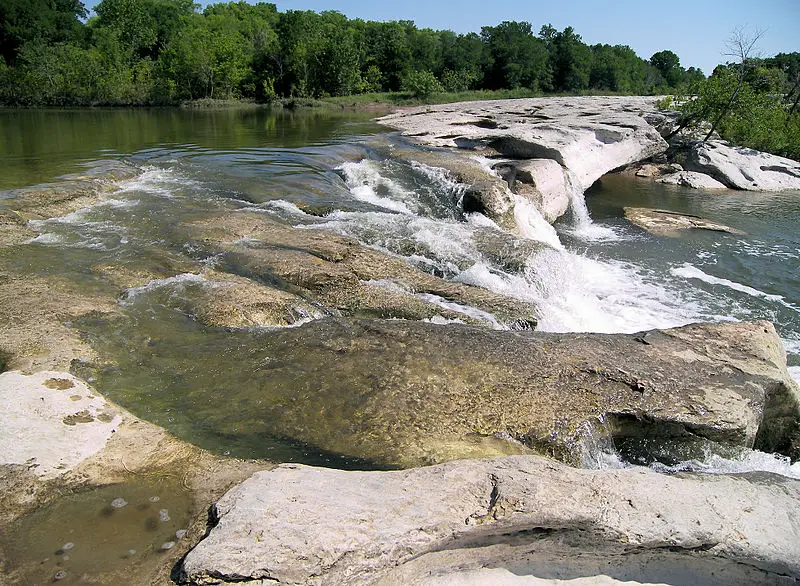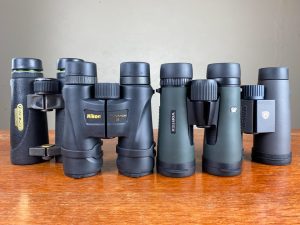Birders in Austin have no shortage of great options for birding sites. Certainly more than you could see in a single day. Most of the top hotspots are located on the south or west side of the city, but if you’re on the far north side of Austin, don’t worry. I’ve included a some recommendations for you too.
The best bird watching hotspots in Austin include the following:
1. Hornsby Bend Bird Observatory
2. Commons Ford Ranch Metropolitan Park
3. Webberville Park
4. McKinney Falls State Park
5. Roy Guerrero Park
If I had to choose only one, I’d pick either Hornsby Bend or Commons Ford, whichever is closer. Both will keep a birder entertained for a full morning.
If you’re up north in the Round Rock/ Georgetown/ Cedar Park Area, here are some spots just for you:
1. Lake Creek Trail
2. Devine Lake (hotspot guide)
3. Berry Springs Park (hotspot guide)
4. Booty’s Road Park
5. Lake Granger Area (if you’re willing to drive)
Hornsby Bend
Hornsby Bend is a wastewater treatment plant, but it’s famous for its birds. The holding ponds for the treated water attract hundreds of ducks each winter, and hundreds of shorebirds during migration periods.

It’s also located right along the Colorado River, a major flyway for birds. The bottomland hardwood forest along the river is great for woodland birding. You can even do some grassland birding near the property entrance around the main building.
Because of the diversity and quality of habitat in such a relatively small area, it’s not difficult to spend a full morning at Hornsby and put up a checklist of over 50 species.

Hornsby Bend is also a bit of a rarity magnet, so it’s worth checking eBird to see what people are seeing currently. Rarities found here in the past few years include Black Scoter, Surft Scoter, White-winged Scoter, Cape May Warbler, Long-eared Owl, Short-eared Owl, Red-necked Phalarope, Long-tailed Jaeger, Sabine’s Gull, plus more going into 2016 and earlier years.
How to Bird Hornsby Bend
If you plan on visiting this Austin mega-hotspot, make sure you check out my Hornsby Bend page. It’s a birding guide that will walk you through everything you need to know to have a very enjoyable and birdy visit.
Commons Ford Ranch Metropolitan Park
Commons Ford is a wonderful conservation and restoration success story.

What used to be a field of invasive Johnson grass, King Ranch Bluestem, and other undesirable plants, all being taken over by encroaching mesquite trees, is now a wide open prairie full of native grasses and wildflowers. This all grows right along the Colorado River and is partly surrounded by hardwoods like Pecans and Bald Cypress.
The intense care this park has received since 2010 has resulted in ideal birding habitat. The prairie produces species like Sedge Wren, LeConte’s Sparrow, plus at least 8 other sparrow species.
The hardwoods that grow along the small creek at the center of the property and the shrubs underneath always provide a scenic walk and produce good numbers of birds like woodpeckers, vireos, and warblers.
The river itself can have ducks, herons, and osprey. If you’re lucky you’ll get a Ringed Kingfisher or a flyover Bald Eagle.
How to Bird Commons Ford
I’ve written a guide on my Commons Ford page that provides details on how to navigate the prairie and the wooded creek, complete with photos.
Be sure to check out the old barn at the end of the entrance road, there’s always bird activity there.
Webberville Park
This park is technically outside of Austin to the east, but it’s a pretty good one. If you’re on the east or south side of Austin and can afford the 30 minute drive, Webberville Park will give you access to habitat that’s difficult to find in abundance close to the city.
Here you’ll find long stretches of mature hardwoods, wide open grassy fields, and the Colorado River.

This is a fun place to spend a morning or evening during migration. Fall migration seems to bring empidonax flycatchers here in good numbers, good news if you need any for your life list or just want to practice identifying this difficult group of birds. Other neotropics seem to like all the large oaks and pecans, so it’s also good for warblers, vireos, orioles, and such.
Bald Eagles can be seen here from late November to early April. They return each winter to nest right along the river, and with some luck, add some excitement to a winter or early spring outing. Pileated Woodpeckers are another fun bird regularly seen and heard here.
My Webberville Park page will help you navigate this fairly large park and see as many species as possible.
Roy Guerrero Park
This one is located right in the heart of Austin, not far from downtown. It will give you some great views of Town Lake, the dam spillway, and the sandy banks of the Colorado as it continues east. The stretch immediately below the dam will sometimes produce Ringed Kingfisher, plus Belted Kingfisher, herons, and egrets.

Walking along the nature trails will give you plenty of smaller trees to watch as birds flit through them. There’s a decent amount of brushy undergrowth that produces winter sparrows like White-crowned, White-throated, and Harris’s Sparrow.
Spring migration can be good here since it’s right on the Colorado River. On a good day in early or mid May expect 8+ warbler species, along with orioles, vireos, and flycatchers.
Fall migration in September and October can be decent with scattered migrants. Summer birding here is typically slower, while winter birding is better with more bird activity.
If you need a birding spot close to central Austin that’s easy to maneuver with flat trails, and has water access, Roy Guerrero is a good choice. Read more on my birding guide to Roy Guerrero Park.
McKinney Falls State Park
I almost didn’t include this one on the list. Not because it’s not great for birds, but because this park often gets loved to death by by all the locals looking for an weekend nature outing.

McKinney Falls is a wonderful spot for hiking and birding. It’s also a state park inside one of the largest metropolitan areas in Texas, which means it gets flooded with people every weekend when the weather is even half way decent.
If you can plan your visit on a weekday morning then go for it, you’ll have great time. But if it’s a Saturday or Sunday, get ready to wait in a line of cars along the entrance road, and possibly even get turned away by park staff due to the park reaching full capacity. Arriving early at sunrise is your best bet to beat the crowds.
If you park at one of the central lots, near the upper falls, you can bird the picnic trail down to the lower falls. After exploring there you can loop back to the upper falls and then take Onion Creek Trail upstream as far as you’d like before turning back.
If you still have some energy left, campsites can often be surprisingly birdy at state parks so head over to the camper hookup sites and simply walk the pavement in a big loop.
Need More Suggestions?
If you need more options for local birding hotspots, use my Texas Hotspot Map and zoom in on Austin. All locations will have a full written guide with photos to help you get an idea of what birding there is like.
Happy Birding!




